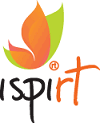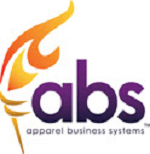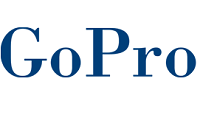Description

Fogwing

iSPIRT
Comprehensive Overview: Fogwing vs iSPIRT
Fogwing and iSPIRT are two distinct entities with different focuses and contributions within the technology landscape. Below is an overview of each, along with insights into their functions and differentiations:
Fogwing
a) Primary Functions and Target Markets:
Fogwing is primarily known for its role in the Internet of Things (IoT) space. It serves as a comprehensive Industrial IoT (IIoT) platform designed to facilitate smart manufacturing, remote monitoring, and predictive maintenance solutions. The primary functions of Fogwing include:
- Device Connectivity and Management: Fogwing enables seamless connectivity with IoT devices, managing data transmission between devices and the cloud.
- Data Analytics and Visualization: It offers tools to analyze IoT data and provides insights through visual dashboards.
- Edge Computing: Supports processing data at the edge to reduce latency and bandwidth costs.
- Predictive Maintenance: Uses data analysis to predict equipment failures and schedule maintenance proactively.
- Integration and Automation: Provides APIs and integration capabilities for automating workflows and integrating with other enterprise systems.
Target Markets:
- Manufacturing industries seeking smart factory transformations.
- Utilities and energy sectors requiring remote monitoring solutions.
- Agriculture businesses looking for precision farming through IoT solutions.
- Supply chain and logistics operations requiring asset tracking and management.
b) Market Share and User Base:
Fogwing operates within the competitive IIoT platform market, alongside notable competitors like Azure IoT, AWS IoT, and Google Cloud IoT. While exact market share data can vary, Fogwing is typically positioned as a specialized solution catering to small-to-medium enterprises (SMEs), aiming for a niche user base that requires tailored solutions rather than more generic, large-scale platforms.
c) Key Differentiating Factors:
- Customization for SMEs: Focuses on providing cost-effective, customizable solutions for SMEs with specific industrial IoT needs.
- Comprehensive Platform: Offers an end-to-end solution from device connectivity to data analytics within a single platform.
- Ease of Use: Designed to be user-friendly, allowing businesses without extensive IT resources to implement IoT solutions effectively.
iSPIRT
a) Primary Functions and Target Markets:
iSPIRT (Indian Software Products Industry Round Table) is a think tank and policy advocacy group focused on nurturing India's software product ecosystem. Its primary functions include:
- Policy Advocacy: Engages with the government to shape policies that support the growth of software products in India.
- Ecosystem Building: Facilitates networking and collaboration among software product stakeholders.
- Research and Reports: Publishes insights and reports related to the software product industry.
Target Markets:
- Indian software product entrepreneurs and startups.
- Policymakers and government entities involved in the tech industry.
- Investors and industry leaders interested in the Indian tech landscape.
b) Market Share and User Base:
iSPIRT is not a commercial product or service but a non-profit organization that impacts the software product ecosystem in India. Its influence is felt through its advocacy, policy contributions, and community-building efforts. The "user base" in this context refers to stakeholders who engage with iSPIRT's initiatives, such as startups, policymakers, and industry proponents.
c) Key Differentiating Factors:
- Policy Influence: Plays a significant role in shaping tech policies in India.
- Community and Ecosystem Focused: Unlike commercial entities, iSPIRT is dedicated to ecosystem building and collaboration among stakeholders.
- Non-Profit Structure: Operates as a non-profit, prioritizing the growth and sustainability of the software product ecosystem over commercial gains.
Conclusion
To summarize, Fogwing is a technology platform focused on providing IoT solutions specifically for industrial applications, whereas iSPIRT is a policy and ecosystem-focused organization aimed at nurturing the software product industry in India. The two entities serve different purposes and audiences within the broader tech landscape.
Contact Info

Year founded :
Not Available
Not Available
Not Available
Not Available
Not Available

Year founded :
Not Available
Not Available
Not Available
Not Available
Not Available
Feature Similarity Breakdown: Fogwing, iSPIRT
Fogwing and iSPIRT, while they operate in somewhat different domains, both relate to technology and innovation with a focus on leveraging modern capabilities for improved outcomes. Below is a conceptual breakdown focusing on the potential features that might be compared between an Industrial IoT platform like Fogwing and an organization like iSPIRT, which is involved in policy advocacy and the development of public goods in India.
a) Core Features in Common
-
Data Handling and Analysis:
- Fogwing: As an Industrial IoT platform, it is equipped with capabilities for data collection, processing, and analysis from IoT devices.
- iSPIRT: While not a software product, iSPIRT supports policy frameworks and projects that involve data solutions, such as the India Stack, which handles financial and personal data.
-
Integration Capabilities:
- Both entities focus on integration:
- Fogwing integrates with devices and external systems for a cohesive IoT ecosystem.
- iSPIRT fosters the integration of various financial and identity systems through initiatives like UPI.
- Both entities focus on integration:
-
Technology Innovation:
- Both are driven by the need to push technological boundaries. Fogwing focuses on IoT and connectivity, while iSPIRT emphasizes digital public goods and platforms.
b) User Interface Comparison
-
Fogwing: Offers a user-friendly interface designed for industrial operators and business decision-makers. It typically features dashboards for monitoring IoT device data, setting alerts, and managing integrations.
-
iSPIRT: This is not a software platform with a typical user interface. Instead, its 'interface' would be the set of APIs and platforms it supports, like India Stack, which provides a suite of APIs for developers. The usability here is more aligned with policy access and technical documentation.
c) Unique Features
-
Fogwing Unique Features:
- IoT Device Management: A strong suite of tools for connecting, monitoring, and managing IoT devices.
- Predictive Analytics: Advanced analytics for predictive maintenance and operational efficiency.
- Edge Computing: Capabilities for processing data closer to the device source for quicker decision-making.
-
iSPIRT Unique Features:
- Policy Advocacy: Acts as a critical player in influencing public policies related to technology in India.
- Public Digital Infrastructure: Development and advocacy for initiatives like the India Stack, which includes Aadhar, e-KYC, and UPI.
- Ecosystem Building: Focus on building a collaborative innovation ecosystem among startups, developers, and policymakers.
In summary, while both Fogwing and iSPIRT may handle data and technology integration, their core focuses diverge significantly. Fogwing emphasizes IoT solutions and industrial data analytics, whereas iSPIRT concentrates on digital infrastructure and policy advocacy in India.
Features

Asset Management
Data Visualization
Connectivity
Security

Technology Development
Support for Start-ups
Collaborative Innovation
Policy Advocacy
Best Fit Use Cases: Fogwing, iSPIRT
Fogwing and iSPIRT serve distinct roles in the technology ecosystem, focusing on IoT solutions and fostering public digital infrastructure respectively. Here’s how they cater to various business needs and scenarios:
Fogwing
a) Best Fit Use Cases for Fogwing:
-
Industries with IoT Implementation Needs:
- Manufacturing: Businesses looking to implement IoT for smart manufacturing can benefit from Fogwing’s capabilities in monitoring, predictive maintenance, and operational efficiency.
- Supply Chain and Logistics: Companies seeking real-time tracking and management of assets and inventory.
- Agriculture: Farms wanting to implement precision farming techniques using IoT sensors for weather, soil, and crop monitoring.
- Utilities: Energy and water management industries in need of smart grid and metering solutions.
-
Size of Business:
- Small to Medium Enterprises (SMEs): Fogwing is well-suited for SMEs that require scalable IoT solutions without the overhead of developing in-house infrastructure.
- Enterprises Looking for Scalable Solutions: Larger enterprises looking for a seamless, scalable IoT platform that can grow with their business complexities.
d) How Fogwing Caters to Different Verticals:
- Customization and Scalability: Offers scalable solutions that can be tailored to specific industry needs without significant upfront investment.
- Ease of Integration: Integrate new IoT technologies with existing systems, minimizing disruptions and boosting productivity.
iSPIRT
b) Scenarios Where iSPIRT is the Preferred Option:
- Public Sector and Policy Initiatives:
- Digital Public Infrastructure Projects: Ideal for projects that require a foundational digital infrastructure layer enabling a wide range of public and private sector services.
- Startups Focusing on Public Tech Innovations:
- Companies developing solutions aligned with national policies like Digital India or those aiming to leverage India Stack components.
- Collaborative Ecosystem Development:
- Environments needing a collaborative framework for digital service providers, governments, and citizens. It supports policy evolution and technology standards development.
d) How iSPIRT Caters to Different Verticals:
- Focus on Public Good and Policy Advocacy: Tailors solutions emphasizing scalability and inclusivity, suitable for diversified public and private sectors.
- Ecosystem Building: Facilitates the development of ecosystems by advocating open APIs and standards, impacting sectors like finance (with products like UPI), healthcare, and education.
Cater to Different Company Sizes
- Fogwing is adaptable for SMEs to large enterprises, providing them with the necessary tools for IoT implementation without heavy investment.
- iSPIRT primarily influences startups and public sector bodies, guiding them through incubation to full-scale adoption of digital infrastructure solutions to benefit larger populations.
In summary, Fogwing serves as a robust platform choice for businesses seeking direct IoT benefits, while iSPIRT is instrumental in shaping public digital infrastructure and collaborative ecosystems.
Pricing

Pricing Not Available

Pricing Not Available
Metrics History
Metrics History
Comparing undefined across companies
Conclusion & Final Verdict: Fogwing vs iSPIRT
To provide a conclusion and final verdict for Fogwing and iSPIRT, we need to evaluate each platform's offering, considering their unique strengths and weaknesses. Below are some general insights that could pertain to similar platforms, but specifics may vary based on actual functionalities and user needs in a real-world context.
a) Best Overall Value
Determining which product offers the best overall value depends on the context of use. Generally, Fogwing and iSPIRT might offer different types of solutions; Fogwing may cater more to IoT and industry 4.0 applications, while iSPIRT (Indian Software Product Industry Round Table) is more of a think-tank focused on advancing the software product industry in India rather than offering digital products directly.
If we consider comparable IoT platforms or software solutions if iSPIRT were to advocate for them, the best overall value would typically depend on specific needs. If IoT integration, robust cloud infrastructure, and scalability are vital, Fogwing would likely provide better direct product value. However, if ecosystem development, policy advocacy, or industry partnerships are prioritized, initiatives supported by iSPIRT might offer greater value.
b) Pros and Cons
Pros and Cons of Choosing Fogwing:
Pros:
- Comprehensive IoT Solutions: Fogwing provides a robust IoT platform with edge computing, data analytics, and cloud integration.
- Scalability: Offers scalable solutions suitable for small to large enterprises.
- Integration Capabilities: Strong integration options with various industrial and cloud technologies.
Cons:
- Complexity: May have a steep learning curve for users unfamiliar with IoT systems.
- Cost: Could be costly for small startups unless specific pricing models are available.
Pros and Cons of Choosing iSPIRT:
Pros:
- Industry Influence: Facilitates significant industry networking and policy influence, useful for companies looking to engage within the Indian software sector.
- Advocacy and Guidance: Provides valuable industry insights, policy advocacy, and strategy recommendations.
Cons:
- Lack of Direct Products: As a think-tank, it may not offer direct technological solutions but advocates for industry development.
- Dependence on Context: The value might greatly depend on current industry initiatives and partnerships.
c) Recommendations for Users
-
Assess Requirements: Evaluate what capabilities are most critical to your needs. For those seeking a technology-focused solution, a directly comparable IoT platform to Fogwing may suit better.
-
Consider Long-term Goals: If fostering industry relations, influencing policy, or engaging with the software ecosystem in India is vital, exploring initiatives supported by iSPIRT might be more beneficial.
-
Evaluate Support and Ecosystem: Consider the support network, community, and integration capabilities of platforms you intend to work with.
-
Cost and Scale: Budget constraints and scalability needs should influence your decision, as direct technology platforms like Fogwing often scale with business needs, while initiatives from iSPIRT might offer indirect benefits such as networking and strategic opportunities.
In conclusion, the decision between Fogwing and expressions of initiatives from iSPIRT should be based on specific needs, with Fogwing likely offering more direct technical product solutions and iSPIRT providing strategic and industry advocacy benefits.
Add to compare
Add similar companies



